Controlling grubs in your lawn
Home / Lawn Guides / Controlling grubs in your lawn
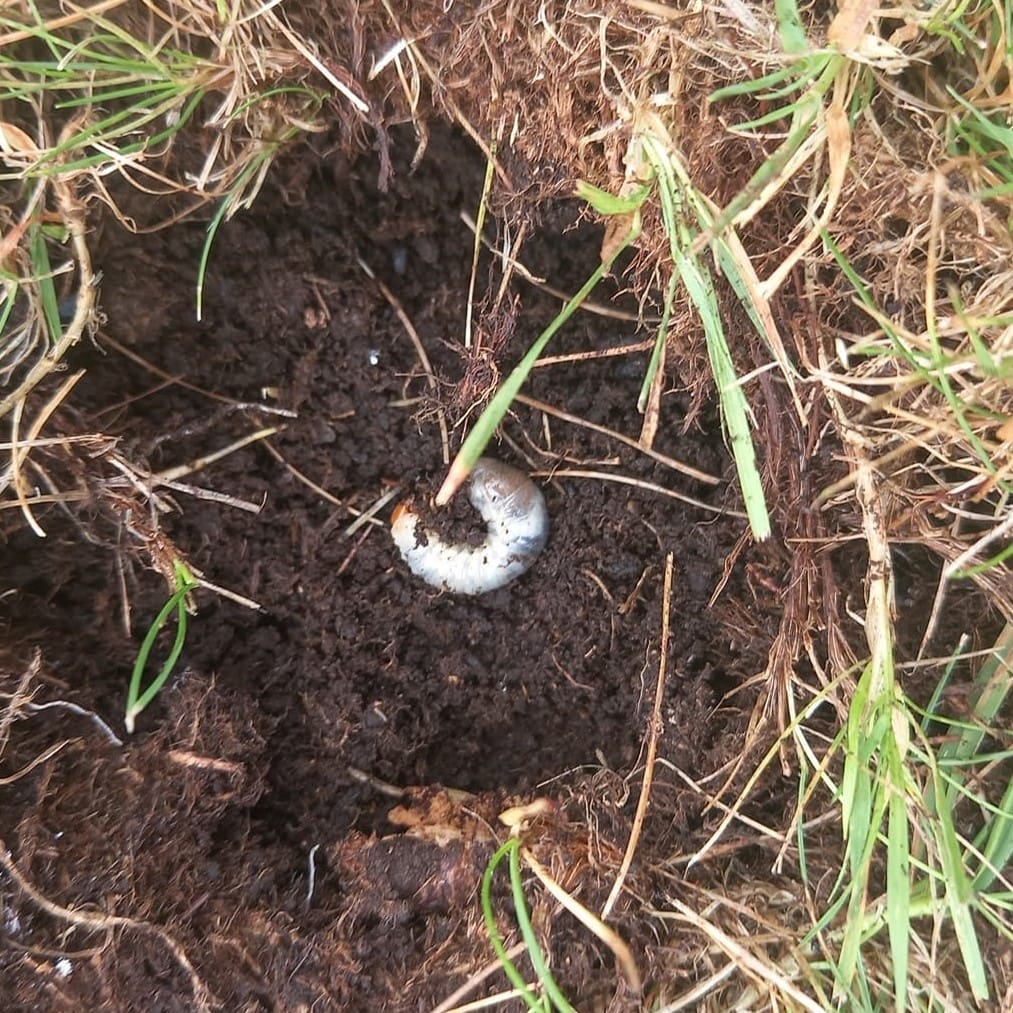
Controlling grubs in your lawn
When it comes to lawn grub control, not all species are the same. Understanding the life cycles of different grub species is crucial for applying insecticides like NZLA Grub+ correctly. While NZLA Grub+ is effective for various grub types, the application methods may differ depending on the species.
Grass Grub
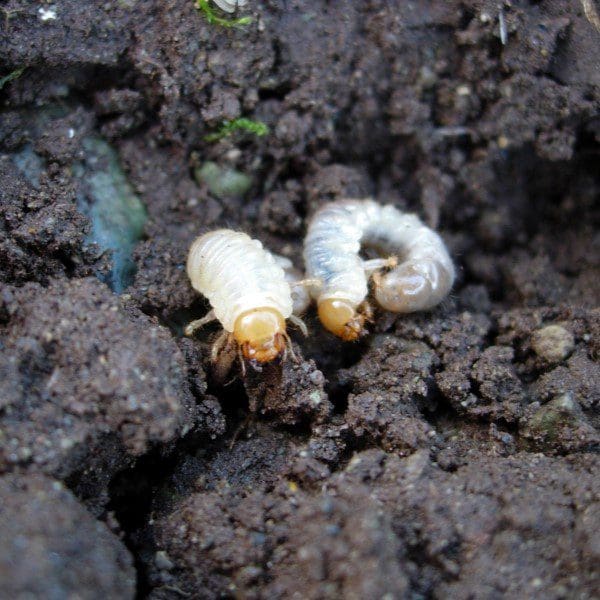
Grass Grubs, also known as Brown Beetles, are one of the most common and destructive lawn pests in New Zealand. Closely followed by Porina, these pests can cause severe damage to your lawn if left unchecked. While grass grubs feed below the surface on your lawn’s roots, Porina larvae come to the surface at night to feed, creating a different pattern of damage.
When Are Grass Grubs Active in New Zealand?
Grass Grubs are typically active from October to early January. These beetles fly at dusk and are particularly attracted to street lights and other light sources. In colder regions of the South Island, the flight season begins slightly later, typically in November.
Grass Grub Lifecycle: From Egg to Adult Beetle
Adult grass grubs beetles live for only two to three weeks, reaching about 1 cm in length. Female beetles lay eggs approximately 10 cm to 15 cm below the soil surface in your lawn. Each female can lay two to three batches of about 30 eggs during this period. The eggs are oval-shaped, about 1.5 mm in diameter, and initially white, turning a creamy, vanilla color as they mature.
Grass grub larvae hatch after about three weeks and begin feeding on your lawn’s roots. The larvae are responsible for the most damage, particularly during the larvae stage when they feed on grass roots. There are three stages of development known as instars.
Instar 1: The first stage of the larvae, immediately after hatching, feeds near the surface. This instar is typically seen from October to January.
Instar 2 (Mid-January to Late February): The larvae move closer to the surface and are often found just 5 cm below the soil. This is when their feeding activity can cause visible damage to your lawn.
Instar 3 (Late February to Spring): During this final stage, the larvae feed in the top layers of the soil, causing the most damage to grass roots before burrowing down 20-30 cm to overwinter. The larvae are translucent, about 25 mm long, with six legs and a light brown head. Once they mature, one-year-old grass grubs pupate and transform into adult brown beetles in the spring.
Controlling Grass Grubs:
Protect Your Lawn with GRUB+ Insecticide. Long lasting Grub and Caterpillar Control for up to 6 Months. Grub+ is more commonly known in the turf industry as Acelepryn. However, It contains the same active ingredient and does exactly the same job as Acelepryn without the price tag!
Porina - Another Common Lawn Pest
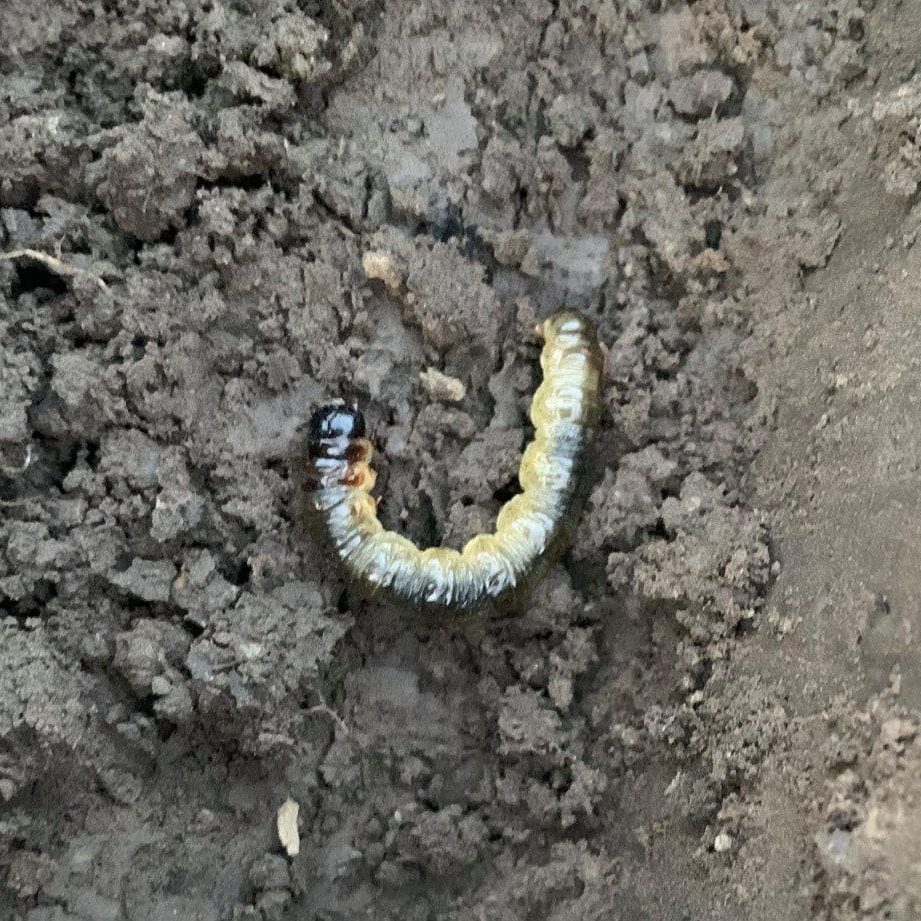
Porina is a common lawn pest in New Zealand, known for causing damage to lawns and gardens. Understanding the lifecycle and behavior of Porina larvae and Porina moths can help you take effective measures to control this pest.
Porina Eggs and Hatching:
Porina eggs are tiny, about 1 mm in diameter, and are initially white when laid, turning black within 24 hours. These eggs hatch into small larvae measuring 2-3 mm in length. Over time, Porina larvae can grow up to 70 mm long, with a distinctive yellow underbelly and greyish body. Female Porina moths typically lay up to 3,000 eggs, usually near the location where they first emerged. Eggs are laid between November and January, which is the ideal time to be vigilant for this pest.
Porina Larvae: Feeding and Growth
Larvae hatch around one month after the eggs are laid. Initially, the Porina larvae live near the soil surface for about six weeks. As they grow to 10-15 mm in length, they begin tunneling deeper into the soil, sometimes as deep as 30 cm. This burrowing behavior makes it difficult to spot the larvae, but their feeding activity can cause noticeable damage to your lawn.
Porina larvae feed primarily at night, emerging from their tunnels to consume nearby grass and leaves. You may notice areas of your lawn with bare patches near the entrance of the larvae’s tunnels. In some cases, Porina castings (small piles of waste) may be visible on the soil surface.
Pupation and Emergence of Porina Moths
During winter, Porina larvae remain in their tunnels, and pupation begins in September. In October, adult Porina moths emerge from the soil. These moths are nocturnal and attracted to lights, typically flying at dusk. The Porina moth will continue to fly and lay eggs until mid-February, completing the cycle.
Controlling Porina in your lawn:
The control method is the same as Grass Grub using NZLA Grub+; however, after application, delay irrigation for 24 hours.
Black Beetle
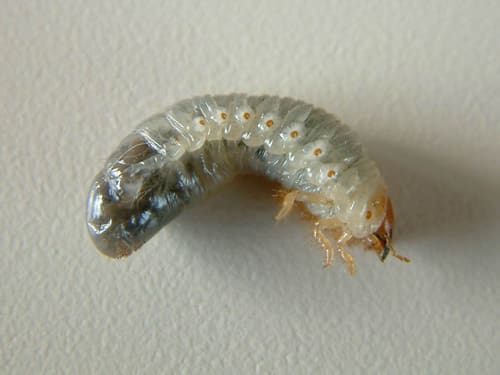
Black Beetles are a significant lawn pest, particularly in warmer regions of New Zealand, such as those north of Lake Taupō. The further north you go, the more likely you are to encounter these pests, as Black Beetle grubs thrive in warmer climates. While they are often confused with Grass Grubs (Brown Beetles), their unique lifecycle and feeding habits make them a distinct threat to your lawn.
Identifying Black Beetles in Your Lawn
The adult Black Beetle starts out with a similar color to the Grass Grub beetle, but quickly develops into a shiny black beetle. The adult beetles are typically about 15 mm long, with males being slightly smaller than females. They are often found flying at dusk, attracted to light sources.
Both the beetles and their larvae are responsible for damaging your lawn, particularly during dry, hot summers. While the adult beetles feed on grass and plants, it’s the larvae that cause the most visible damage to the lawn, similar to the damage caused by Grass Grubs.
Black Beetle Lifecycle: From Egg to Adult
Eggs: The eggs of the Black Beetle are small, measuring about 2 mm in diameter, and are laid just beneath the soil surface. These eggs are typically found from late September to early December, depending on temperature and climate conditions.
Larvae: The larvae, which hatch from the eggs, resemble Grass Grub larvae in appearance but are typically larger when fully grown. Black Beetle larvae feed on grass roots close to the soil surface, causing damage that often results in yellow patches or dead grass. These areas may be easily pulled up from the ground due to the roots being eaten away by the larvae. The larvae have orange spiracles (breathing pores) along their body, which distinguish them from other lawn pests.
Pupation: After feeding, the larvae begin pupating at the end of January. During this stage, they undergo three distinct instars (developmental stages). The pupae are initially pale yellow to light brown, turning reddish-brown as they mature. The adult beetles emerge from February to April, but will not lay eggs until the following spring.
Damage Caused by Black Beetles
The damage caused by Black Beetles is similar to Grass Grubs, especially in the summer months. Larvae feed on the roots near the soil surface, leading to yellowing grass and dead patches in your lawn. This can be especially noticeable during hot, dry summers, when the grass becomes stressed. The areas affected by Black Beetles can be easily pulled up, as the roots have been severely damaged.
Control and Prevention of Black Beetles in New Zealand Lawns
Use NZLA Grub+ insecticide: Insecticides can help target Black Beetle larvae. Apply during the larva feeding period from September onwards.
Black Beetles vs Grass Grubs: Key Differences
While Black Beetles and Grass Grubs can cause similar damage to your lawn, they have important differences:
Black Beetle larvae are larger than Grass Grub larvae and can be identified by the orange spiracles along their bodies.
Black Beetles have a full lifecycle underground, with both the adults and larvae feeding beneath the soil surface, whereas Grass Grubs typically feed on roots at or just below the surface.
Don't be a Granular Insecticide Sucker
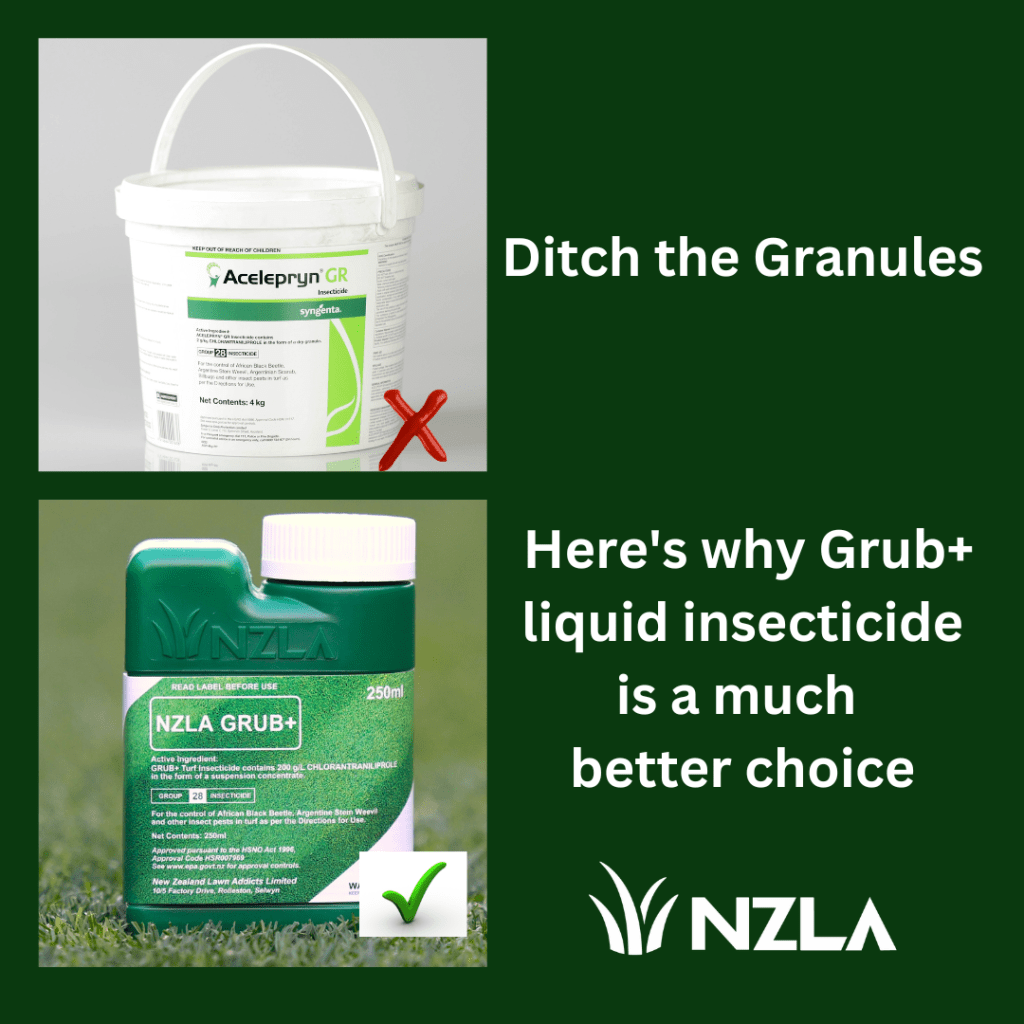
While granular Acelepryn can certainly be effective in certain circumstances, liquid formulations like Grub+ offer clear advantages when it comes to faster action, better absorption, precise application, and environmental safety. Whether you’re dealing with grubs, caterpillars, or other lawn pests, liquid Grub+ provides superior control, ensuring that your lawn remains healthy and free of damaging insects with minimal disruption to your plants and the environment.
Read our article: Grub+ vs Acelepryn Granules